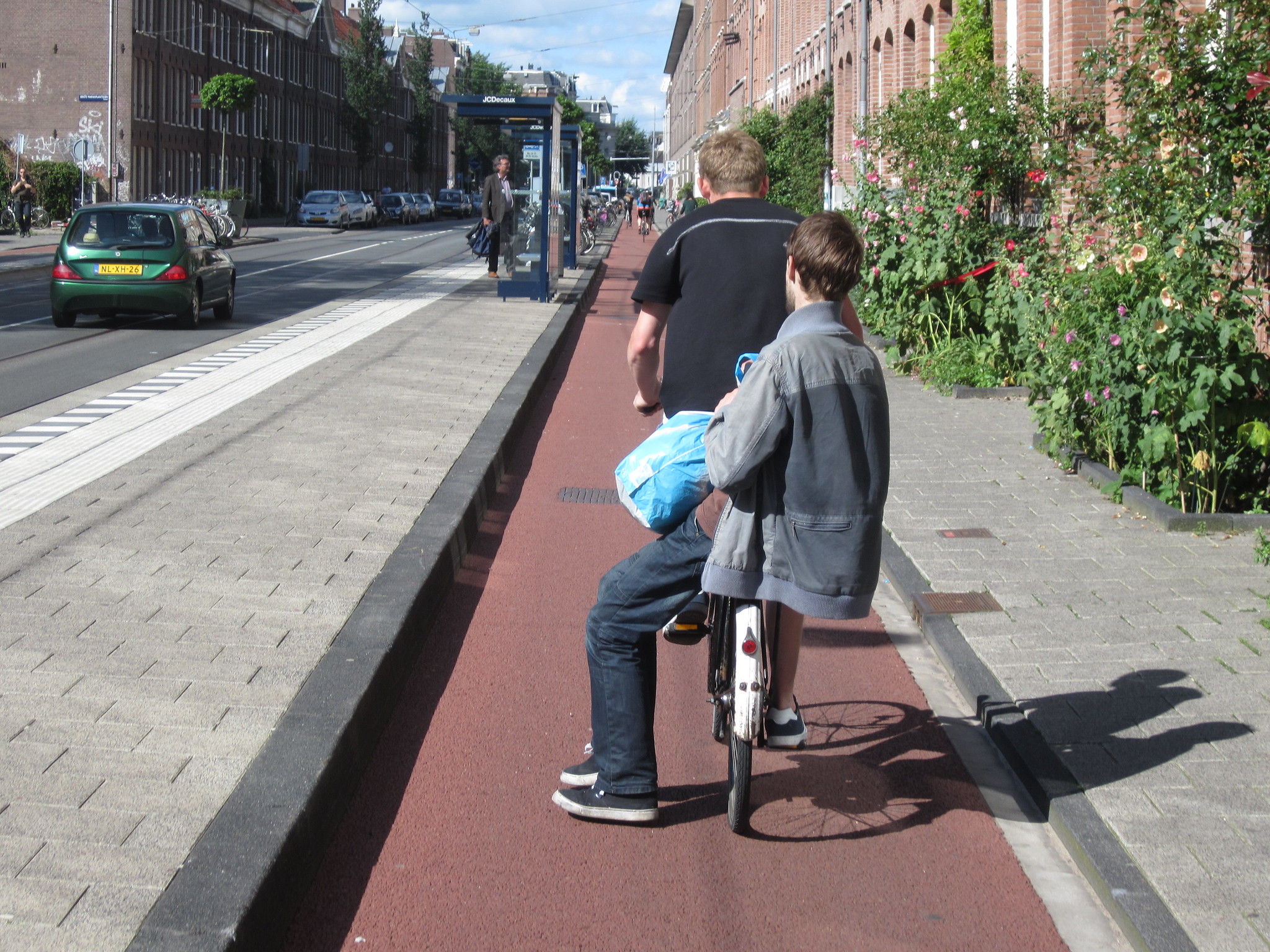Ald. Matt Martin (47th) and some of his staff recently took a bike tour of the ward with some members of the Dutch consulate to discuss strategies for improving traffic safety in the district. Bart Twaalfhoven, consul general of the Netherlands in the Midwest, took part in that ride. I recently sat down with him to discuss some of the differences between the Netherlands and Chicago when it comes to road safety.
Bart started out by sharing a bit of history on how the Netherlands, which was once a relatively car-centric place, became a cycling Mecca where there are now more bikes than people.
Great ride with @AldMattMartin & team to see 47th ward cycling infra and talk topics like the Leland Greenway, a potential Clark St. protected lane, & coordination.
The Netherlands didn’t become a cycling nation overnight - happy to chip in with the 🇳🇱 perspective where needed. https://t.co/0awxTIwtb0 pic.twitter.com/lWFQlnL1qu
— Bart Twaalfhoven (@NLinChicago) July 27, 2022
Bart Twaalfhoven: The uptick of cycling was started by the oil crisis 50 years ago. We were helped by the fact that we’re a very flat country and many of our cities were built around a church with small streets and a large wall to keep out invaders. Many of people’s daily needs were met within a short distance of their home. We were kind of forced to use bikes due to the oil crisis but we also saw it as an opportunity to improve the health of the population and reduce congestion in cities. Here in Chicago I find that I can easily pass drivers and buses stuck in traffic. You don’t really lose time on a bike.
Courtney Cobbs: Do you know the history of the woonerfs ["living streets" with low speed limits, shared pedestrian/bike rider/driver space, and traffic calming]?
BT: I’m not sure of the history but I do know it goes in the whole spirit of promoting the bicycle. When we were forced to turn to the bike, we decided to turn the cyclist from a second class road user to a first class road user. We decided to give cyclists the right of way within cities. In the court system, the cyclist is always right, even if the cyclist had gone through a red light. It’s very rare for drivers to not lose in court.
On woonerfs, cars are tolerated. Children and cyclists are given the right of way. The other cool thing is that every child is educated on cyclist safety. We started this in the '70s as well.
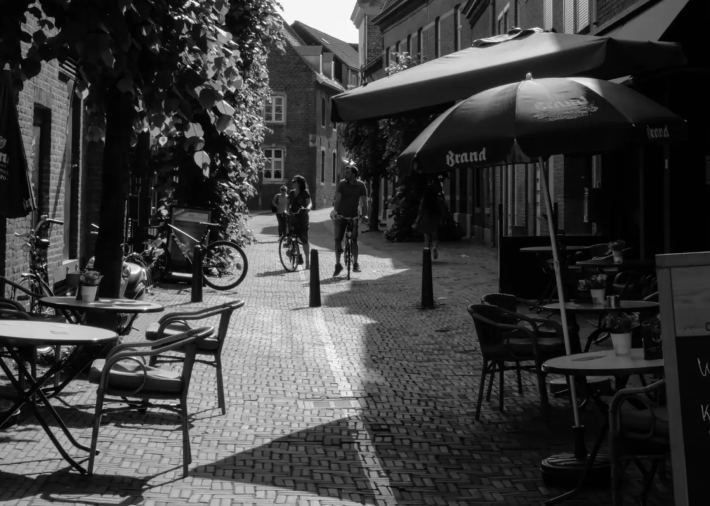
CC: In a way this reminds me of the Barcelona superblocks.
BT: Yes! I cycled there and felt really safe. They have a lot of bike lanes that are protected by [parked] cars and I think it’s an excellent way to do bike infrastructure.
CC: Sadly here in Chicago sometimes it feels like empty cars have more right to the street than me.
BT: Yes, yes. But I’m very pleased to see [Martin's and 1st Ward alder Daniel La Spata's] commitment to making biking better. We recently went on a consulate bike ride with these two aldermen. I’m also impressed with the Lakefront Trail and the Major Taylor Trail. I haven’t been to the Mayor Taylor Trail yet but I’ve seen photos and it’s beautiful. I look forward to visiting. I’m also pleased to say the Chicago transportation commissioner Gia Biagi will be traveling to the Netherlands at the end of September. She will join nine other individuals from the United States who will be educated on cycling, cycling infrastructure, and mindset, and how we can learn from each other.
CC: Are you aware of any developments that the Netherlands is doing around cycling at the moment?
BT: We are working on constructing highways for cyclists. Similar to here in Chicago, you have to stop at lots of traffic lights when you’re traveling across the city by bike. We want to make it easier for people to travel 15-20 miles by bike from city to city without needing to stop.
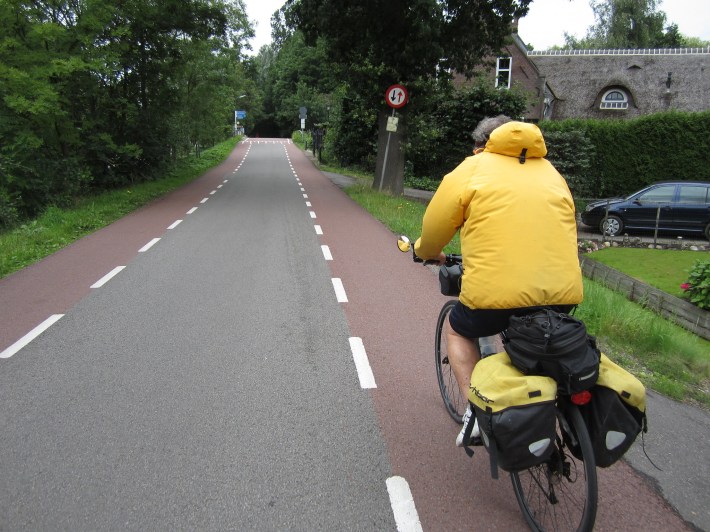
We are also working on motion activated lighting within cycling paths. As cyclists approach, the lights will come on and two minutes later, they turn off. It’s a matter of safety, sustainability, and fun.
CC: Did these highways come about due to overcrowding on the cycling path, the desire to reduce stopping and starting for cyclists, or perhaps both?
BT: We definitely wanted to reduce the amount of stopping and starting. By doing that, it improves the cycling experience. We also wanted to reduce overcrowding. We live pretty close to the coast in the Netherlands but on the weekends we avoid going to the beach because the paths are so crowded with everyone wanting to visit the coast. It was definitely a bit of both.
CC: I’m definitely jealous that you all are experiencing overcrowding. To a degree the lakefront path can become crowded. I wish I could bike with my friends without needing to look over my shoulder every few seconds. I really like that the Netherlands builds cycling paths that enable social cycling.
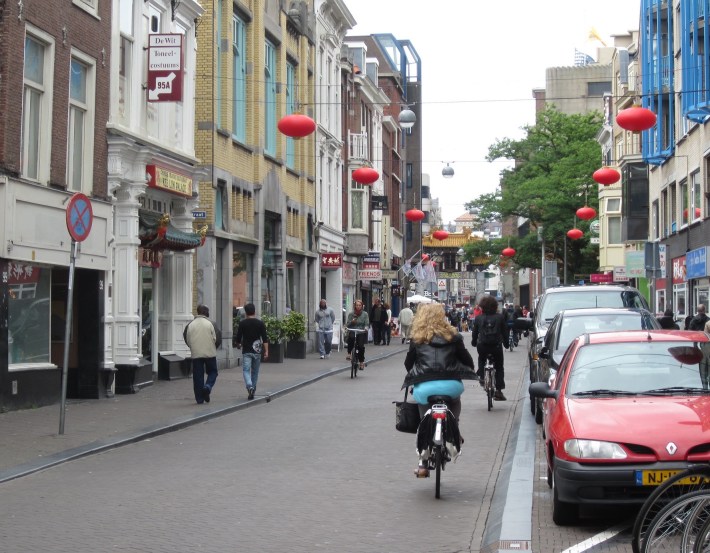
BT: It is definitely one of the advantages. Every country has their own advantages in certain ways. Illinois, Chicago, United States, has their own advantages. I’m really grateful I can cycle here in Chicago.
CC: Have you traveled to other parts of the United States?
BT: Yes and no. I am unable to fly due to health reasons so I do a lot of driving. Driving to San Francisco for the weekend is out of the question. As part of my role with the consulate, I am responsible for 13 states: North Dakota down to Kansas, Ohio, then up again to Michigan. I have traveled to the majority of the states, mostly business-wise. I hope by the end of the year or early next year I will have visited all of them. The United States is such a vast country.
I have found that Chicago is one of the most livable cities in the United States. There are weeks that we don’t use the car. You can walk or cycle to shops, restaurants, and bars. People are really living here. Chicago is also a very light city. We have these tall buildings and yet the sun still manages to shine on you. There’s also a lot of history here. We have discovered some Dutch history on the South Side of Chicago. Some Dutch farmers in the 1830s established themselves on the South Side.
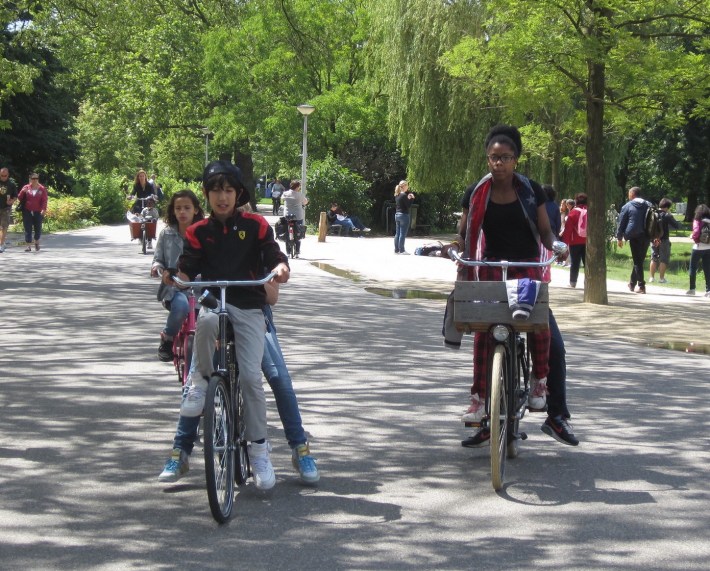
CC: Is there anything from the perspective of the Netherlands’ cycling culture that you’d want to see implemented here in Chicago?
BT: I don’t think we should compare; I think we should learn from one another. I’m looking forward to discussing with the commissioner the possibility of teaming up, where they can help us and where we can help them, when possible of course. Sometimes conditions are so different that you can only grasp an idea and that’s it.
I feel quite okay on my bike though I’d love to see fewer people opening their doors not looking for cyclists. I’ve never had it happen to me but even I have opened my car door without looking. This is a universal problem- it isn’t just specific to the United States. These things happen in the Netherlands too.
[The so-called "Dutch Reach" became part of the Illinois drivers' curriculum in 2018: using your inside hand (right hand on the driver side, left hand on the passenger side) to open the door. This move makes you look over your shoulder, reminding you to check for bike riders and making it more likely an approaching bike rider will be in your field of vision. - Ed.]
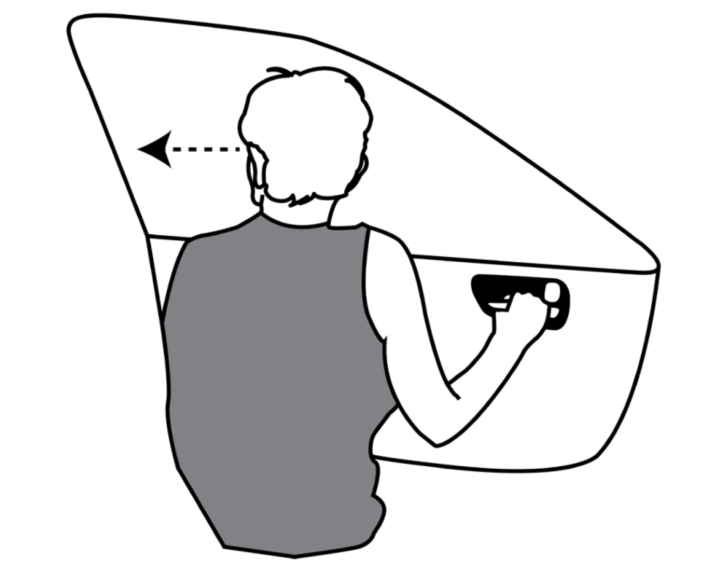
CC: Have you had an opportunity to bike in other Midwestern cities?
BT: No but I have seen sincere interest and plans during my visits to other cities. Perhaps in 20 years the whole situation will change. When I was in Minneapolis, I was struck by the [skyways], elevated corridors between the buildings to shield people from the cold. These corridors make it difficult to cycle in the winter. However, I highly value the plans and attitude of the authorities who are working to improve cycling.
We then discussed the freedom cycling can unlock for children and teens. Bart told me that in the Netherlands kids receive year-long education on safe cycling when they’re in elementary school. They must pass a supervised exam at the end of the school year. If they don’t pass, they must go through another year of bike ed. Bart also commented that because most drivers in the Netherlands have likely ridden on a bike before, it improves their driving skills.
Give bicycles a chance.
Amsterdam, 1978. Before it decided to change into a people friendly, liveable city. pic.twitter.com/aIC5XhJlIc
— Harman Idema (@HarmaninToronto) April 9, 2022
My conversation with Bart left me wondering if Chicago can ever reverse the car dominance on our streets and begin to prioritize safe and efficient conditions for pedestrians, bike riders, and transit users over driver convenience. That remains to be seen but I am grateful we have the Netherlands as an exemplary example of a cycling culture.
